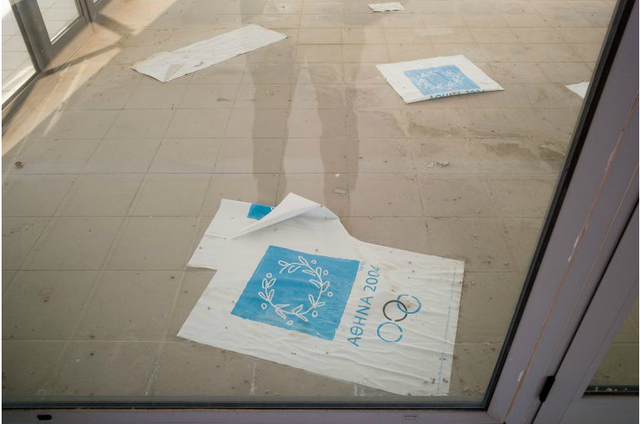Do remnants from former Olympic sites turn its host cities into post-event time warps, or can leftovers have a useful afterlife?
This question occurred to photographer Jon Pack when watching the 2008 Beijing Olympics, recently described by Chinese artist Ai Weiwei as an “elaborate costume party with the sole intention of glorifying the country.” Collaborating with Gary Hustwit, director of critically acclaimed documentaries Helvetica, 2007, Objectified, 2009, and Urbanized, 2011, Pack’s desire to document the troubling relationship between former Olympic sites and their hosting cities gave birth to ongoing collaborative photography project The Olympic City.
The project records the remnants and aftermath of the Olympic games in its former host cities around the world. After the addition of Beijing, Moscow, Berlin, and London to The Olympic City’s long list of subjects, the two plan to release a large format book in March 2013 compiling four years of documentation. Until then, The Storefront for Art and Architecture is showcasing Hustwit and Pack’s archival images, research materials, and video clips of Munich, Moscow, Barcelona and more in a guerrilla exhibition titled The Post-Olympic City.
With paradoxical images of desolate graffitied ghost cities next to proud commemorative statues, The Post-Olympic City is an important study of the social and aesthetic costs of injecting host cities with huge amounts of capital and development. Both Hustwit and Pack have a flawless eye for detail, and the project interrogates what happens to costly Olympics-specific structures once the two weeks are up, without veering into aggressive territory.
The subject matter couldn’t be more timely. With the the 2012 London Olympics closing yesterday, questions about the long-term benefits to the city are high in the minds of many. In regards to public spending, Londoners want to know where the hell all that money is going, and what the real impact will be on the communities living in the city. There was outrage back in February when news broke that tenants in the stadium’s surrounding boroughs were being evicted so that landlords could cash in from the games, and author Iain Sinclair recently appeared on The VICE Guide To the Olympics claiming that the Lower Lea Valley had been turned into a “toxic wilderness” and “post-industrial theme park” under the Olympic program. The author claims the outskirts of the site were home to a potential site for “wilderness” and “escape” from the overbuilt concrete jungle of East London— until the Olympic bulldozers showed up.
Each site in The Post-Olympic City suggests a definitive re-birth or decay. “Re-birth” translates to uses that belie the site’s once-majestic beginnings, becoming prisons, housing, malls, and gyms; the remnants and leftovers of disused architecture stand out like abandoned anachronisms. Once the city is drained of its potential to create capital through the games, the metropolis and its inhabitants appear forgotten.
The photographs show cities subject to capitalist bombs, not yet recovered from shell shock. The Post-Olympic City isn’t so much a charged, anti-Olympics statement as a welcomed attempt to unmask the glamour of the Olympic event, and record its repercussions on the city, whether positive or negative.
A panel discussion with artists, about The Olympic City project, will take place on August 14th, at 7pm, at The Storefront for Art and Architecture.



Comments on this entry are closed.
{ 1 trackback }